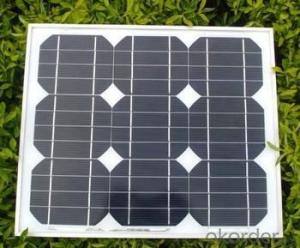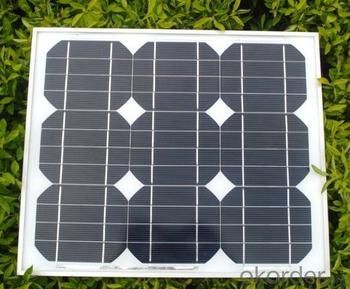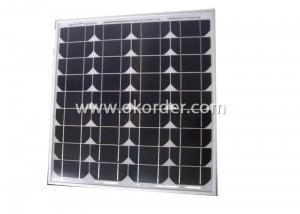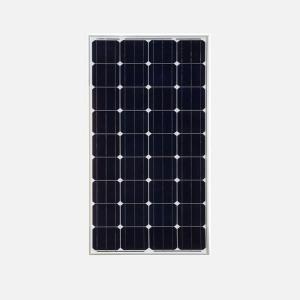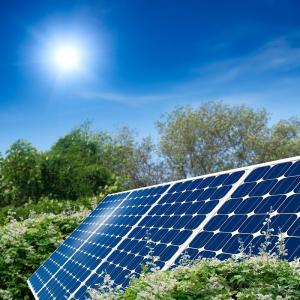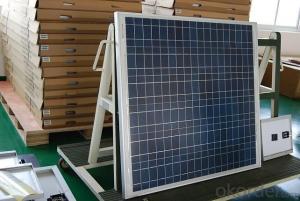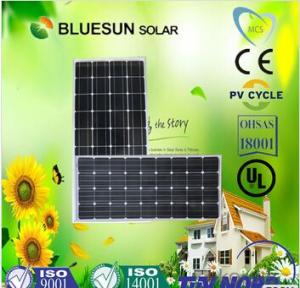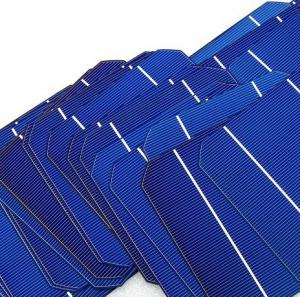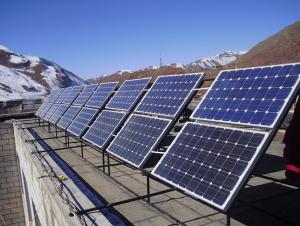Rooftop Solar Cells PB Free Aluminum Paste for Monocrystalline Silicon
- Loading Port:
- China Main Port
- Payment Terms:
- TT OR LC
- Min Order Qty:
- -
- Supply Capability:
- -
OKorder Service Pledge
OKorder Financial Service
You Might Also Like
Quick Details
| Model Number: |
Packaging & Delivery
| Packaging Detail: | 25kg/drum |
| Delivery Detail: | 5 days after payment arrived |
Specifications
AL8866 is a series of aluminum pastes developed for use as the back electrode on single or polycrystalline silicon solar cells.
Technical Data Sheet
Product description
AL8866 is a series of aluminum pastes developed for use as the back electrode on single or polycrystalline silicon solar cells. This low bow aluminum paste is specially designed to form p+ doped layer when fired on a p-doped silicon (<200 microns) photovoltaic devices. This paste has been optimized to eliminate Al bead formation during the firing process.
Typical properties | |
Solids (%) | ≥ 75% |
Viscosity (Pa.s) (NDJ-79, 25) | 23-35 |
Emulsion thickness | ≤ 25μm |
Screen mesh | 200-280 |
Dried thickness | 35±5μm |
Fired thickness | 25±5μm |
Resistivity (milliohms/square) | ≤ 30 |
Bowing | 125×125mm Monocrystalline silicon≤ 1mm (200 micron wafer) 125×125mm Monocrystalline silicon 1±0.25mm (180 micron wafer) |
All properties are target values and are not meant to represent product specifications.
- Q: Can solar cells be used in electric bikes or scooters?
- Yes, solar cells can be used in electric bikes or scooters to harness the sun's energy and convert it into electricity to power the vehicles. By incorporating solar panels, these vehicles can become more sustainable and reduce their dependence on traditional energy sources.
- Q: Can solar cells be used in commercial applications?
- Yes, solar cells can be used in commercial applications. They are commonly used in various commercial sectors such as power generation, agriculture, transportation, and telecommunications. Solar panels are installed on rooftops or in open spaces to generate electricity, reducing reliance on traditional energy sources and lowering operational costs for businesses. Additionally, solar-powered street lights, solar water heaters, and solar-powered charging stations are some examples of commercial applications of solar cells.
- Q: How do solar cells handle electromagnetic fields from power lines?
- Solar cells are designed to convert sunlight into electricity, and they do not have the ability to handle or interact with electromagnetic fields from power lines.
- Q: Where can I get a competitive price for this solar cell? The 2bb/3bb polycrystalline solar cell panel?
- We are a solar cell company based in Shandong, and we sell 2BB/3BB Polycrystalline solar cells/multi-solar cells.
- Q: Can solar cells be used to power remote wildlife monitoring systems?
- Yes, solar cells can be used to power remote wildlife monitoring systems. Solar cells convert sunlight into electricity, providing a reliable and renewable source of power for monitoring equipment in areas without access to the grid. This makes them an ideal solution for remote wildlife monitoring systems, allowing for continuous data collection and monitoring while minimizing the need for maintenance and manual power supply.
- Q: What is the impact of dust storms on solar cell efficiency?
- Dust storms have a negative impact on solar cell efficiency. The accumulation of dust particles on the surface of solar panels obstructs sunlight from reaching the photovoltaic cells, reducing their ability to convert sunlight into electricity. This dust buildup decreases the overall power output of the solar panels and requires regular cleaning and maintenance to maintain optimal efficiency.
- Q: Can solar cells be used on boats?
- Yes, solar cells can be used on boats. They are a popular and sustainable source of energy for powering various systems on boats, including lighting, navigation equipment, and charging batteries. Solar panels can be easily installed on the deck or roof of a boat to harness sunlight and convert it into electricity, reducing the reliance on traditional fuel sources and offering a clean and renewable energy solution.
- Q: What is the impact of bird droppings on solar cell efficiency?
- Bird droppings can have a significant negative impact on solar cell efficiency. The droppings can create a layer of dirt and debris that blocks sunlight from reaching the solar cells, thereby reducing their ability to convert sunlight into electricity. This decrease in efficiency can lead to a decrease in overall power output, requiring more frequent cleaning and maintenance to ensure optimal performance of the solar panels.
- Q: What is the current situation and the recent progress space solar cells in China?
- The power generated by solar cells is the main and most important energy sources in the out spacer, which makes this technology so vital in our country. You can imagine if we have enough and stable power generation generated by power cells, we will make a huge progess in the research and development in space.
- Q: Can solar cells be used for powering satellites?
- Yes, solar cells can be used for powering satellites. Solar cells are often used as the primary power source in satellites due to their ability to convert sunlight into electricity. The solar cells are typically mounted on the satellite's surface to capture sunlight and generate power for various systems and instruments onboard.
Send your message to us
Rooftop Solar Cells PB Free Aluminum Paste for Monocrystalline Silicon
- Loading Port:
- China Main Port
- Payment Terms:
- TT OR LC
- Min Order Qty:
- -
- Supply Capability:
- -
OKorder Service Pledge
OKorder Financial Service
Similar products
Hot products
Hot Searches
Related keywords
